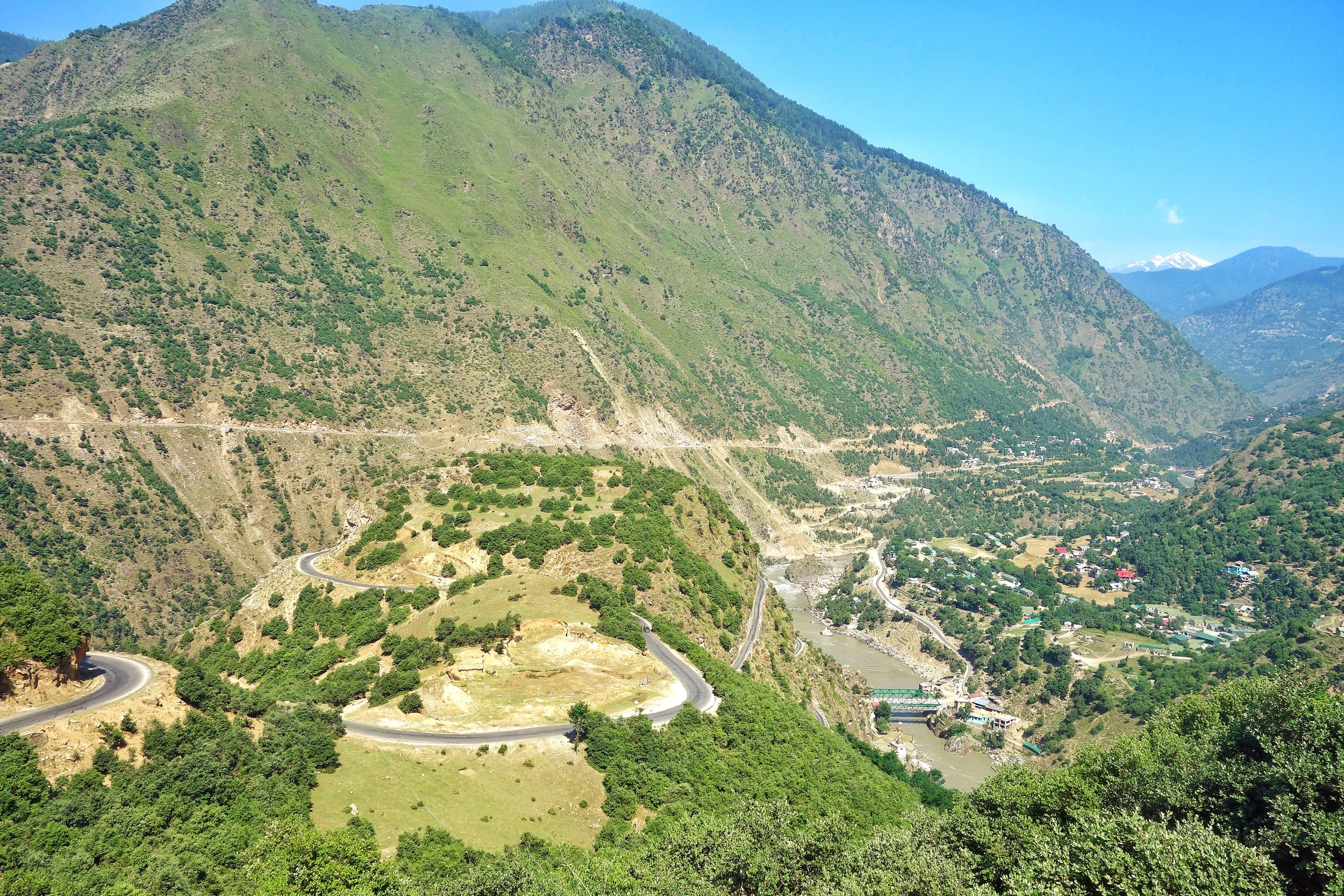Bandarkoot near Kishtwar where the Marsudar meets the Chenab / Chandrabhaga
The Dichotomy of the Moon River
The Moon River as I like to call it or the Chandrabhaga or the Chenab, as its commonly known as, is truly a Himalayan River in all senses. This River and its tributaries run through some of the wildest and the ruggedest country in the Himalayas.Lahaul, Pangi and Kishtwar Valleys and their sub-Valleys are homes to this River. All these three Valleys have some of the craggiest Peaks in the Himalayas and the beauty is just mind blowing. Its the River of folktales and in the Punjab many love stories were written about Lovers being seperated by the Chenab. Who can forget the immortal lines from the classical Punjabi romance Sohni Mahiwal :
Sohni Chenab de kinare, Te Pukarey, Tere naam ve, aaja aaja aaja
Of course it ended in tragedy when both Sohni and Mahiwal were taken by the Chenab and the romance turned into a Tragedy for people to talk about.
Most are well aware that the Chandra and Bhaga River which rise around the Baralacha La Pass and then flow down into Lahaul and they finally merge. But the Chandrabhaga or the Chenab is the only major Himalayan River who’s name changes for apparently no reason. And also it has two starting points as well and there is debate whether the Chandra is a tributary of the Bhaga or the other way round. Its mostly an academic debate as they both rise close to each other and as by scientific definition the main River is the one which rises the farthest from the point it hits the Sea or another River that it merges into. And the Moon River finally becomes a part of the mighty Indus, after combining with the Sutlej as the Panjnad, as it makes its way to the Ocean.
Video of Driving along the Chandrabhaga Gorge between Killar in Pangi Valley, Chamba to Udaipur in the Lahaul Valley.
So why the 2 names ? The Moon River was referred to as the Askini in the Rig Veda. It meant the River with dark waters which holds true till today. The Waters of the River are rather murky as I couldnt help but notice as I travelled along the River from Kishtwar all the way till Tandi. The Gorge of the Moon River is amazingly spectacular. Its sparsely populated because of the verticality and its only now with the building of Roads can we humans even venture into this forbidden land of the Moon River. It was refferd to as the Chandrabhaga in the Mahabharata as well and the Greeks also called it Sandraphogus / Sandabaga / Cantabaga. Infact Alexander the Great established an Alexandria on the Indus at the point where the Panjnad (combination of the Chandarbhaga/ Chenab and Sutlej) met the Indus. The name Chenab is also a further development of the name with Persian cognates. Chen meaning Moon and Ab meaning water. The Moon River.
So where exactly does the River change its name ? On the maps, the regular ones officially once the River crosses into J&K from Himachal Pradesh which is at the point where the Sansari Nallah meets the River. The Sansari Nallah is considered the Border between the two states though some Maps of JK claim areas beyond the Sansari Nallah like Dharwas before Killar to be a part of J&K. The Sansari Nallah is a typical wild Himalayan River of the Region and this The photo below is taken exactly at the point where this Nallah meets the Moon River.
The Sansari Nallah as it meets the Chandrabhaga at the border between Himachal Pradesh and Jammu and Kashmir. This is where the Chandrabhaga becomes the Chenab.
The Sansari Nallah as it meets the Chandrabhaga at the border between Himachal Pradesh and Jammu and Kashmir. This is where the Chandrabhaga becomes the Chenab as per one account.
But there is more to it. Many purists consider the River to be still the Chandrabhaga as it enters the state of J&K. One of the main proponent of this theory is a Slovakian gentleman by the name of Altos Mlonk. He is an absolute Guru. He is the absolute master of Kishtwar and knows stuff beyond our imagination. As per Altos the point where the Chandrabhaga becomes the Chenab is at Bandarkoot near Kishtwar town where the turbulent Marsudar meets the Chandarbhaga. Infact the Marsudar carries more water than the main River itself when it merges into it.
The Marsudar rises at around 5175 mts and its begins life as the Gumbar and the Batkot Nallah which merge and form the Warwan River. This River has carved out the Warwan Valley which in my opinion is one of the most beautiful Valleys of the Himalayas. And the Warwan flows down and is joined by many other Rivulets in the Marwah and Dachan areas. The Marsudar flows throw some of the most unknown areas of the Himalayas which most wouldnt even know of. I trekked the Warwan in in 1989 and still remember the quaint River unlike the wild Marsudar that it becomes.
So I take it as such. And believe that the Chandrabhaga becomes the Chenab when the Marsudar joins it at Kishtwar. The place where these wild Rivers meet is like a pilgrimage spot for someone like me. Its just magical when you think about the places these Waters come from. The Moon River enchants forever.


